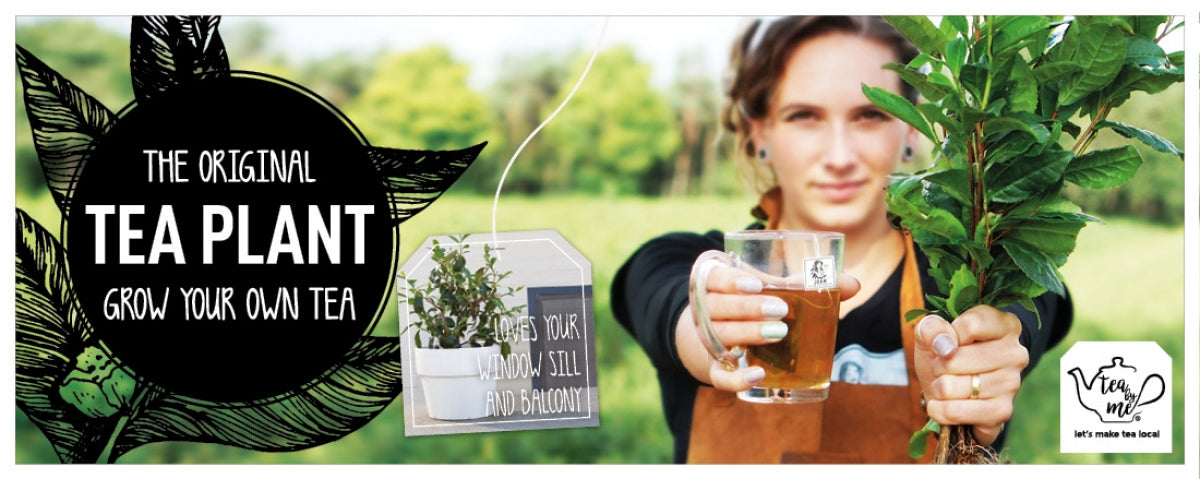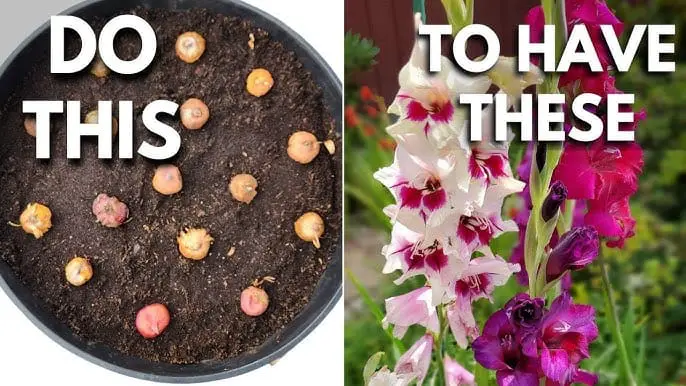Grow Your Own Tea Leaves At Home With Camellia Sinensis: Easy Steps
Grow your own tea leaves at home with Camellia sinensis. This versatile plant thrives in many climates and is easy to care for.
Growing your own tea leaves offers a rewarding and sustainable way to enjoy fresh tea. Camellia sinensis, the tea plant, can be cultivated in your garden or even in containers. It requires well-drained soil, partial sunlight, and regular watering. With proper care, you can harvest your own tea leaves and enjoy a variety of teas, from green to black.
Starting with healthy seedlings or cuttings ensures a higher success rate. Not only does growing your own tea provide fresh, organic tea leaves, but it also adds a beautiful evergreen plant to your home garden.
Introduction To Homegrown Tea
Have you ever dreamed of making your own tea? With Camellia Sinensis, you can grow tea leaves at home. This plant is the source of all traditional teas. Imagine the joy of harvesting and brewing your own fresh tea leaves. It’s easier than you think and very rewarding.
Why Grow Your Own Tea
Growing your own tea has many benefits. Here are a few reasons:
- Control over quality: You know exactly how your tea is grown.
- Freshness: Freshly picked leaves offer superior flavor.
- Cost-effective: Save money by growing your own.
- Enjoyment: Experience the joy of nurturing and harvesting.
Benefits Of Fresh Tea Leaves
Fresh tea leaves provide numerous advantages. Here are some key benefits:
| Benefit | Description |
|---|---|
| Enhanced Flavor | Fresh leaves have a richer and more complex taste. |
| Higher Nutrients | Fresh leaves retain more antioxidants and vitamins. |
| Aromatic Experience | Enjoy a delightful aroma with freshly brewed tea. |
| Customization | Blend different types of leaves to create unique flavors. |
Choosing The Right Camellia Sinensis
Choosing the right Camellia Sinensis is crucial for growing tea at home. This plant is the source of green, black, and oolong tea. Understanding the different varieties and where to buy them will help you start your tea-growing journey successfully.
Varieties Of Camellia Sinensis
There are two main varieties of Camellia Sinensis: Sinensis and Assamica. Each has unique characteristics.
| Variety | Characteristics |
|---|---|
| Sinensis | Smaller leaves, hardy, ideal for cooler climates. |
| Assamica | Larger leaves, thrives in warmer climates. |
Choose Sinensis for a small garden. Choose Assamica for a larger space.
Where To Buy
Buy Camellia Sinensis plants from reputable sources. Online nurseries and local garden centers are great places.
- Check customer reviews.
- Ensure the plants are healthy.
- Look for disease-free plants.
Some recommended online nurseries are:
Visit local garden centers for expert advice. They can guide you on the best variety for your area.
Preparing The Soil
Creating the perfect soil is key to growing healthy Camellia Sinensis plants. This ensures your tea leaves flourish at home. Follow these guidelines to prepare the best soil.
Soil Requirements
Camellia Sinensis thrives in well-drained soil. The soil should be rich in organic matter. Use compost or aged manure to enhance it. Avoid heavy clay soils as they retain too much water.
| Soil Type | Suitability |
|---|---|
| Sandy Loam | Excellent |
| Clay | Poor |
| Loamy | Good |
Ideal Ph Levels
Camellia Sinensis needs acidic soil. The ideal pH level ranges from 5.5 to 6.5. Use a pH meter to test your soil. Adjust the pH with soil amendments.
- Add sulfur to lower pH.
- Add lime to raise pH.
Keep the soil moist but not waterlogged. Ensure proper drainage to prevent root rot.

Credit: www.tea-happiness.com
Planting Your Tea
Growing your own tea leaves at home can be a rewarding experience. Camellia Sinensis is the plant responsible for producing a variety of teas. This section will guide you through the steps for planting your tea.
Seed Vs. Seedling
Choosing between seeds and seedlings is the first step. Each has its pros and cons.
| Seeds | Seedlings |
|---|---|
|
|
Planting Techniques
Follow these steps to plant your Camellia Sinensis.
- Prepare the soil: Use well-draining, acidic soil.
- Plant the seed or seedling: Ensure the root ball is covered.
- Watering: Keep the soil moist but not waterlogged.
- Sunlight: Place in a spot with partial shade.
Regular care is crucial for healthy tea plants. Happy planting!
Caring For Your Tea Plants
Growing your own tea leaves at home is a rewarding experience. To ensure healthy growth, you need to care for your Camellia Sinensis plants properly. This section will guide you on watering schedules and fertilization tips.
Watering Schedule
Tea plants need consistent moisture. Water them regularly but avoid overwatering. A good rule of thumb is to water your tea plants every 2-3 days. Make sure the soil is well-drained to prevent root rot.
| Time of Year | Watering Frequency |
|---|---|
| Spring | Every 2-3 days |
| Summer | Every 1-2 days |
| Fall | Every 2-3 days |
| Winter | Every 3-4 days |
Fertilization Tips
Fertilizing your tea plants is crucial for their growth. Use a balanced fertilizer with equal parts nitrogen, phosphorus, and potassium. Fertilize your plants every 4-6 weeks during the growing season.
- Apply fertilizer in early spring.
- Use a slow-release fertilizer.
- Water the plants after applying fertilizer.
Here is a simple fertilization schedule:
- March: Apply slow-release fertilizer.
- May: Apply balanced fertilizer.
- July: Apply balanced fertilizer.
- September: Apply slow-release fertilizer.
By following these watering and fertilization tips, your Camellia Sinensis will thrive and produce delicious tea leaves.
Pruning And Maintenance
Maintaining your Camellia Sinensis tea plant is crucial for healthy growth. Proper pruning encourages bushy growth and more tea leaves. Regular maintenance keeps pests and diseases at bay. Learn how to prune and maintain your tea plant effectively.
When To Prune
Prune your tea plant twice a year. The best times are early spring and late summer. This timing encourages new growth and helps shape the plant.
- Early Spring: Stimulates new growth.
- Late Summer: Prepares the plant for winter.
Tools For Pruning
Using the right tools makes pruning easier and safer. Here are some tools you’ll need:
| Tool | Purpose |
|---|---|
| Pruning Shears | For cutting small branches and leaves. |
| Pruning Saw | For thicker branches. |
| Gloves | Protect your hands from cuts. |
Ensure your tools are clean and sharp. This prevents infections and makes clean cuts.
Harvesting Tea Leaves
Harvesting tea leaves from your own Camellia Sinensis plant is a rewarding experience. It requires keen observation and a bit of patience. Knowing when and how to harvest ensures the best flavor and aroma in your tea.
Signs Of Readiness
Before picking, make sure your tea leaves are ready for harvest. Look for these key signs:
- Bright green color: The leaves should have a vibrant green hue.
- Soft texture: Ready leaves feel soft and tender to the touch.
- New growth: Harvest the top two leaves and a bud from new growth.
How To Harvest
Follow these steps to harvest tea leaves properly:
- Use clean, sharp scissors or garden shears.
- Pick early in the morning for the freshest leaves.
- Focus on the top two leaves and the bud.
- Avoid tearing or damaging the leaves.
- Place the harvested leaves in a clean basket or container.
| Step | Description |
|---|---|
| 1 | Use clean, sharp scissors. |
| 2 | Harvest early in the morning. |
| 3 | Pick the top two leaves and a bud. |
| 4 | Avoid damaging the leaves. |
| 5 | Place leaves in a clean container. |
Harvesting tea leaves is both an art and a science. With practice, you will master it. Enjoy the process and the delicious tea that follows.

Credit: m.youtube.com
Processing Your Tea
After harvesting your Camellia Sinensis leaves, the next step is processing your tea. Proper processing is crucial to enhance the flavor and aroma. Let’s explore the essential steps in drying and storing your tea leaves to ensure the best quality.
Drying Methods
Drying your tea leaves is a critical step. It removes moisture and preserves the leaves.
Here are some effective drying methods:
- Air Drying: Spread the leaves on a clean cloth in a well-ventilated area.
- Oven Drying: Place the leaves on a baking sheet. Set the oven to a low temperature (around 100°F or 40°C). Keep the oven door slightly open. Check and stir the leaves every 15 minutes.
- Sun Drying: Lay the leaves on a tray. Place them in direct sunlight. Ensure they are not exposed to humidity.
Each method has its benefits. Choose the one that suits you best.
Storage Tips
Proper storage of dried tea leaves ensures they stay fresh and flavorful.
Here are some tips for storing your tea:
- Airtight Containers: Use containers that seal tightly. This prevents exposure to air and moisture.
- Cool and Dark Place: Store the containers in a cool, dark place. Avoid direct sunlight and heat sources.
- Avoid Strong Odors: Keep the tea away from spices and strong-smelling foods. Tea leaves can absorb odors easily.
Follow these tips to enjoy fresh and aromatic tea for a long time.

Credit: www.cambridgebee.com
Frequently Asked Questions
How Do You Grow Camellia Sinensis At Home?
Camellia Sinensis thrives in well-drained soil and partial shade. Water regularly and prune to maintain shape.
What Are The Ideal Conditions For Tea Plants?
Tea plants need acidic soil, moderate temperatures, and high humidity. Avoid direct sunlight and frost-prone areas.
Can Camellia Sinensis Be Grown Indoors?
Yes, Camellia Sinensis can be grown indoors. Ensure good light, proper watering, and suitable humidity levels.
Conclusion
Growing your own tea leaves with Camellia Sinensis is rewarding and simple. Enjoy fresh, homegrown tea daily. This journey not only saves money but also ensures a sustainable lifestyle. Start your tea garden today and relish the benefits. Happy gardening and happy sipping!







